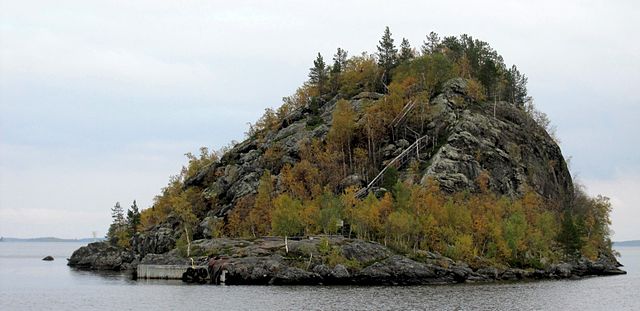Finnic paganism was the indigenous pagan religion in Finland, Karelia, Ingria and Estonia prior to Christianisation, the religion was native to the Baltic Finnic peoples. It was a polytheistic religion, worshipping a number of different deities. The principal god was the god of thunder and the sky, Ukko; other important gods included Jumo (Jumala), Ahti, and Tapio. Jumala was a sky god; today, the word "Jumala" refers to all gods in general. Ahti was a god of the sea, waters and fish. Tapio was the god of forests and hunting.
An ancient cup-stone used for votive offerings in Hartola.
Lemminkäisen äiti by Akseli Gallen-Kallela. A depiction of the underworld, Tuonela, from a myth found in the Kalevala.
An illustration of the hero Väinämöinen from Finnic mythology.
Rock painting at Astuvansalmi, showing elk, humans and a boat.
Ukko, Äijä or Äijö, parallel to Uku in Estonian mythology, is the god of the sky, weather, harvest, and thunder in Finnish mythology.
Painting by Robert Ekman in 1867 called Lemminkäinen tulisella järvellä where Lemminkäinen asks help from Ukko ylijumala with crossing the lake in fire on his route to the wedding at Pohjola.
Ukonkivi (Ukko's rock) in Lake Inari in Lapland. Ukonkivi was a holy site to the local Sami. Archeological finds, apparently offerings, have been found at site.
Corded Ware culture boat-shaped battle axe from Närke, Sweden.
Simplified drawing of a stone carving type found in Karelia, which is believed to have characteristics of both snakes and lightning.








